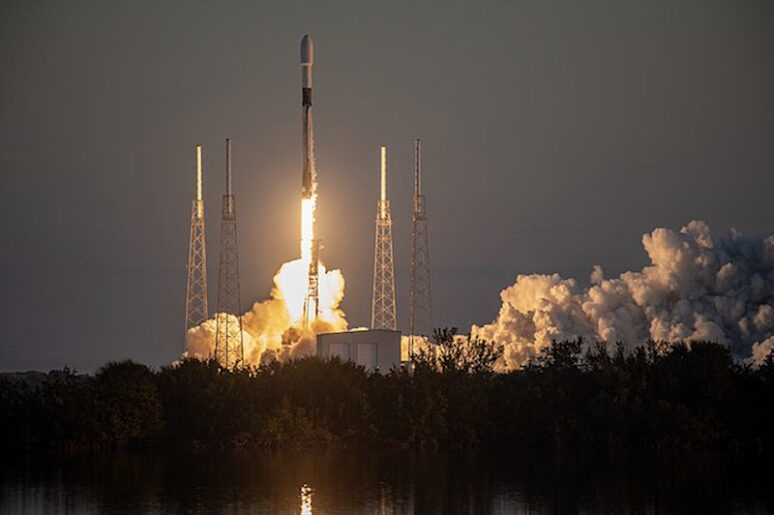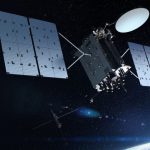The last projected GPS III missions and the first follow-on missions are part of Space Systems Command (SSC)’s 21 new mission assignments, all of which are expected to launch within the next two to three years.
The GPS III-9 and GPS III-10 missions will be launched by United Launch Alliance (ULA), according to an SSC news release, with the follow-on GPS III satellite, GPS IIIF-1, launching with SpaceX. The GPS Block IIIF satellites introduce several improvements and novel capabilities compared to previous GPS satellite blocks.
Lockheed Martin is building up to 32 next-generation GPS III/IIIF satellites to modernize GPS, according to the company, and is currently contracted for 10. The satellites provide up to three times better accuracy, up to eight times improved anti-jamming capabilities, a new L1C civil signal that is compatible with international GNSS systems, and a modular design that allows for future on-orbit technology and capability enhancements.
During his presentation at Stanford University’s PNT Symposim on Thursday, U.S. Space Force Lt. Col. Robert Wray, 2nd Space Operations Squadron commander, said the first GPS IIIF satellites will launch toward the end of 2026. Launches will then be slated every four months after that to “get more satellites on orbit that can provide more capability” rather than just staying ahead of the curve as satellites retire. Because the components work so well, satellites typically have a lifespan of 25 years or more, and usually are put out of commission because of atomic clock failure.
Once in orbit, GPS IIIF satellites will provide regional military protection (RMP) for a boosted M-code signal, more M-code power and resiliency in disadvantaged areas and a search and rescue (SAR) payload. By the end of this decade, Wray said, they’ll be able to update satellites while they’re still in orbit, pushing modernization forward with the ability for much faster updates.
SpaceX launched the GPS III Space Vehicle 06 (GPS III SV06) aboard the Falcon 9 Rocket earlier this year. The GPS III SV07 mission is on target to launch in 2024, and SV08 in 2025.
“We have four satellites that are built and ready to launch out of Cape Canaveral, with the next one set to launch in June 2024,” Wray said. “We’re trying to balance how to modernize GPS and take care of the current systems. Now the limiting factor is launch vehicles. Next June will be our 80th launch, a huge milestone. By 2026 we will have launched all of our GPS III satellites.”
All 21 of SSC’s launch service missions are part of the FY24 National Security Space Launch (NSSL) Phase 2 Launch Service Procurement contract following completion of the NSSL Mission Assignment Board’s assignment process for FY24 launch service awards. This is the fifth, and last, order year in the Phase 2 contract.
ULA received 11 mission assignments and SpaceX received 10. The launches focus on a variety of mission areas including delivering resilient missile warning, tracking, and defense in a highly contested and congested space domain; providing assured, resilient, low-latency military data and connectivity worldwide to the full range of warfighter platforms; evaluating the ability of various Next Generation Overhead Persistent Infrared sensor designs to meet missile tracking requirements; and, of course, GPS modernization.
“Over the five-year Phase 2 contract, we will have ordered a total of 48 missions, a significant increase over the 34 missions originally estimated leading up to Phase 2,” said Brig. Gen. Kristin Panzenhagen, program executive officer, Assured Access to Space, according to the release. “The increase in launch tempo is a clear reminder of how vital space-based capabilities are in providing our warfighters and our nation’s decision-makers with the information needed to stay ahead of and to deter adversarial forces.”





